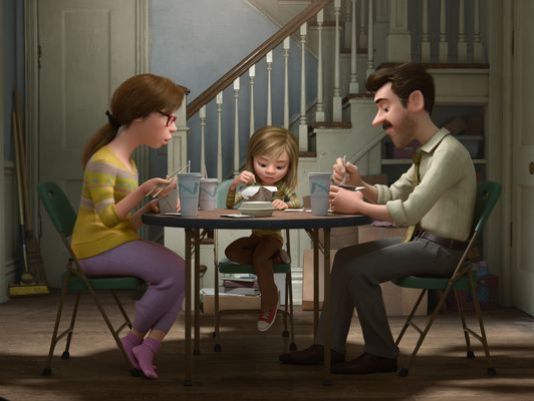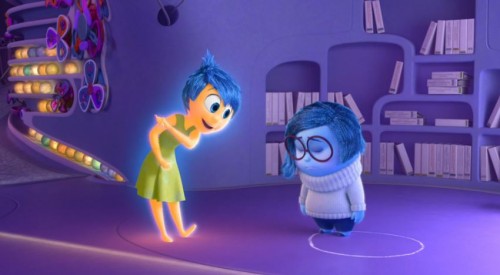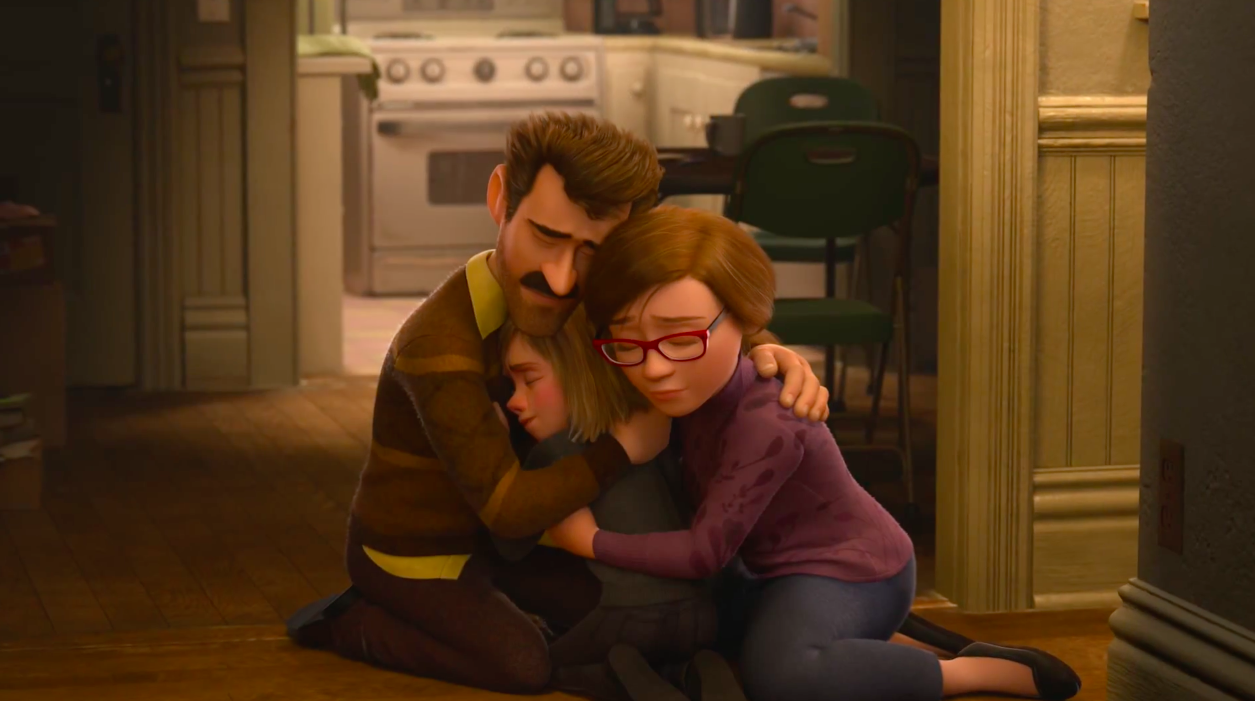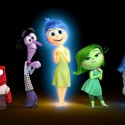‘Inside Out’ is a movie I’d been waiting for a year to see and, once again, Pixar did not disappoint. This is a movie I’m going to be assigning to many of my patients and doctoral students as a way to demonstrate important psychological principles.
Warning: some spoilers of the movie ahead
The movie is about an 11 year old girl, Riley, originally from Minnesota, who moves to San Francisco with her parents. The leading characters of the movie, however, aren’t Riley and her family, but Riley’s primary emotions – Happiness (Joy), Sadness, Fear, Anger, and Disgust. These emotions demonstrate what it might be like in the mind of an 11 year-old girl who struggles with having to move to a different city, away from her friends, away from her hockey league, and has a hard time pretending to be happy for her parents.

What’s really powerful about this film is how accurate it is to cognitive, developmental, and clinical psychology. The 5 emotions used in this film are in fact 5 of the 6 scientifically validated universal emotions (the 6th one being surprise). Psychologist and scientist, Paul Eckman, is most known for his work with universal emotions as he traveled around the world and found that these were present in every culture and presented in the same way through the same facial expressions around the world. Eckman’s work has been used for psychology research, as well as for the US government, and even inspired the popular television series, ‘Lie to Me’.
Other concepts displayed in this movie included the conversion of short to long-term memory. When a memory is seen as salient or relevant enough to us, or when it has been repeated enough times, the brain messengers, dopamine and glutamate, ensure the long-term encoding of that memory. Think of these messengers as computer coders or awesome IT support team – they write the code to ensure that our brain computer is up to date with the new information. Other concepts briefly covered in the movie include psychological changes of reaching/approaching puberty, psychological stressors, family psychology, inductive and deductive reasoning (thinking like Sherlock Holmes by using logic, reasoning, and observation to reach a conclusion), and many others.
Of all 5 of Riley’s emotions, Joy seems to be the leader, she keeps the others in check but reminds the viewers that all of them have an important function. She states that Disgust keeps Riley safe from being poisoned, Fear keeps her safe from a catastrophe by imagining worst case scenarios, Anger protects her from others and also allows her to be a better hockey player, while Joy ensures that Riley is happy. However, Joy fails to see the importance of Sadness and tries to shoo Sadness away from anything Riley-related, forbidding this emotion in every way possible. She even draws a circle on the floor and makes Sadness stay inside it, forbidding her to leave or to touch any of Riley’s memories, so as not to taint them with sad memories.

As if Riley’s mind trying to keep Sadness at bay wasn’t enough, Riley’s parents put an additional pressure on her, especially when her mother asks her to “keep smiling” for her dad. Essentially, Riley’s mom, without meaning to do so, communicates to Riley that being sad about the move was not ok and that she needs to pretend to be happy to support her father through this.
Unfortunately, Joy’s good intentions backfire when Riley is unable to receive the support she so desperately needs to help her with adjusting to her new environment. In fact, Riley initially seems to be having symptoms of an Adjustment Disorder with Depressed Mood, where she has a hard time coping with her move, she withdraws from her parents and old friends, she misses school, and even tries to run away. By being unable to experience her sadness about all these changes and pretending that she was ok, Riley ends up being angry, anxious, and irritable, getting into a fight with her parents and her best friend, before shutting down altogether. In fact, it looks like Riley’s potential Adjustment Disorder might have turned into a full-blown Major Depressive Episode. (I’m saying, “might have” because in order to be diagnosed, the symptoms need to have lasted for 2 weeks or more, and we don’t know how long Riley’s symptoms actually lasted).
What messages does this movie send to its viewers?
Many, actually, but perhaps the most important one is this – our emotions are all important, every single one of them. They all serve an important function and we cannot selectively feel some but not others. It’s an “all-or-none” deal. If we numb sadness, we also numb joy. We need to openly experience all our emotions, and that includes sadness, as painful as it may be sometimes. Sadness allows for connection, when we see someone else feeling sad, we might feel sad too (this emotion is called empathy) and might want to alleviate their sadness (this is compassion). When we stay with this individual and share our emotions together, the resonating effect can produce a healing experience. That is exactly what we see when Sadness comforts Riley’s imaginary friend, Bing Bong, and also when Riley is able to share her sadness with her parents.

In fact, when we are sad, our body and facial expression cue the people around us that we need help – the tears running down our face, the pupil dilation, the non-threatening posture, all of this signals others that we could use some support. And at the same time, the people around us might then experience a bitter-sweet sensation of compassion, caused by an activation of the compassion centers of our brain (the insula and the anterior cingulate cortex, among other structures), and the warmth of the heart caused by a release of a special “cuddle” hormone, oxytocin (so called because it is released when we want to or are in the process of hugging someone, or similar actions).
The movie doesn’t stop there; it ends with a bang by reminding us that we can experience multiple (and even contradictory) emotions at the same time, such as happiness and sadness. The movie also shows that everyone experiences these emotions, as they are, in fact, universal. This demonstrates a psychological concept of common humanity, or the idea that other people are just like us, they might struggle with the same emotions, insecurities, heartbreaks, and neuroses as we do, further validating our internal experiences.
Overall, ‘Inside Out’ was amazing. I highly recommend it and would love to hear your opinions on it.
Dr. Janina Scarlet is a Licensed Clinical Psychologist, a scientist, and a full time geek. She uses Superhero Therapy to help patients with anxiety, depression, chronic pain, and PTSD at the Center for Stress and Anxiety Management and Sharp Memorial Hospital. Dr. Scarlet also teaches at Alliant International University, San Diego. Her book, Superhero Therapy, is expected to be released in July 2016 with Little, Brown Book Group.
If you would like to learn more about Superhero Therapy, please feel free to contact Dr. Janina Scarlet via Twitter @shadowquill, Facebook: https://www.facebook.com/Shadow.Scarletl, or via this website.

I can see the strengths you describe in this movie. My concern is the message that we are all controlled by our emotions. I would have liked to have seen reasoning, moral & spiritual compass, and problem solving represented other than through the characters of emotions.
I agree that all feelings are important but I strongly disagree with the concept that we are controlled by them.
Thank you and I look forward to reading your other posts.
Jennifer
Hi Jennifer,
Thanks so much for your comment. You’re absolutely right, in focusing only on emotions, we do miss out on other important factors that contribute to what makes us human, including (as you pointed out) morals, reasoning, etc. Would be a fun follow up to this movie 🙂
I think Problem Solving, Reasoning etc would be personality islands in the movie! After all, so is Honesty Island. The emotions active in Headquarters aren’t actually guiding the person. They’re just pushing him or her gently towards something. They’re not forcing him or her to do anything. Hockey Island is fueled partly by Anger, and that’s okay. Problem Solving and Reasoning would, I think, be fueled by both Joy and Fear. Problems always arouse some kind of fear of failure, I’d say. But they’re great if you actually manage to solve them!
Thanks so much, Emily,
that’s a great point 🙂
Hi doc Janina Scarlet.
Im from Australia, I also work has an Assistant educator/ special support. I work with children whom display violent behabiour , i Have try everything and nothing has work , i heard of this movie and and i through that all early learning centres should have it view by children, from 3+, , as a special reward/strategy to defused any negative behaviour. I can actually say; it works, it defused and focuses a child attention from becoming a violent one. but unfortunately no many people do the research they need to implement it or to make parents aware of this strategy, which teaches and shows how children emotions are wired.
please could you help with any more information on behavioral management and spectrum.
kind regards
Lidia
Hi Lidia,
thank you so much for your comment. That’s wonderful that you found something that is so effective, I would love to learn more about it. I don’t actually have much expertise with this population but would love to hear more about your wonderful work.
Cheers 🙂
Hello.
I personally think it covered things pretty well for the level aimed at. On the morality and spirituality issue, aren’t those too ultimately guided by our emotions?
I feel it could be a useful tool in helping people describe and understand their own brain activity. I see my own brain as a series of characters, but they are my characters, and not necessarily understood by others. This film could be used for reference.
You say that it covered most emotions, but I was surprised that embarrassment/shame only came up briefly during a ‘no pants’ dream. Is it because they are seen as dysfunctional feelings or do they just stem from the other feelings? I find that embarrassment and shame can be very major behaviour controllers.
I’d also love to see the film used to explain some common ‘disorders’. Depression was covered, but I’m trying to explain my own bpd/chronic ptsd in terms of inside out. Depression for me is often just the side effect. I know it has to do with the formation of memories and therefore the personality ‘islands’, but what exactly is the mechanism? Most of the time I feel like I don’t have any islands. There’s a horrible feeling of not being able to connect with the world around me. Or am I just not in touch with my feelings (sadness), like you described, and therefore not able to have that social bond with others (empathy)?
I’m not usually confident enough to write anything this public, but as a Pixar geek with an intest in psychology I thought it might be worth a shot. And the superhero stuff sounds like an interesting take on things. Aren’t they too mostly misunderstood people?
Hmm.
Thank you.
Hello,
thank you so much for your comment, you’re right many of the other emotions and disorders weren’t covered. I’m excited about this movie and am also hoping that in the future more films like it will be made to talk about the very things you mentioned – PTSD, BPD, empathy, etc.
Thank you so much for your very kind words, you’re absolutely right, superheroes are often also misunderstood and I’m glad that writers like Gail Simone, for example, are starting to go deeper into the psyche of the superheroes.
You’re very well spoken, thank you so much for writing to me, I hope you’re able to write publicly more often, you have a lot to contribute 🙂
Cheers!
Hello Janina,
My name is Cary. I am a therapist in NY and would love to speak with you regarding utilizing methods of geek culture to aid in patient recovery. I currently use very similar methodology for many of my young adult, adolescent and pre-adolescent patients. I have always loved geek culture, and now that the world has followed suit, using these methods have been immeasurable useful in treatment. I am currently working on a concept to institute Inside-out into some of my pre- and adolescent patients.
I would love the chance to consult with you and learn more about your techniques and methods. You can reach me by my email if you have a chance.
Thanks so much,
Cary S.
Hi Cary,
I would love to speak with you. Please email me: superherotherapy@gmail.com, let’s chat more 🙂
I’d love to hear more about this therapy, Janina. Any developments or successes so far? Could you tell us about it?
Thank you so much, Emily. I’m happy to chat with you more about it. Feel free to email me: superherotherapy@gmail.com
I’m not an MD nor have I studied phychology in depth but as a parent of a child with ADHD and oppositional defiance disorder I have to say I really appreciate this movie. My daughter is only 7 years old so her overall understanding and control of her emotions is still devoloping but I think this movie helps her to better understand her emotions in a fun and positive way. Bravo Disney and Pixar for helping my daughter and other children like her.
Thank you so much, so glad it was helpful for your daughter 🙂